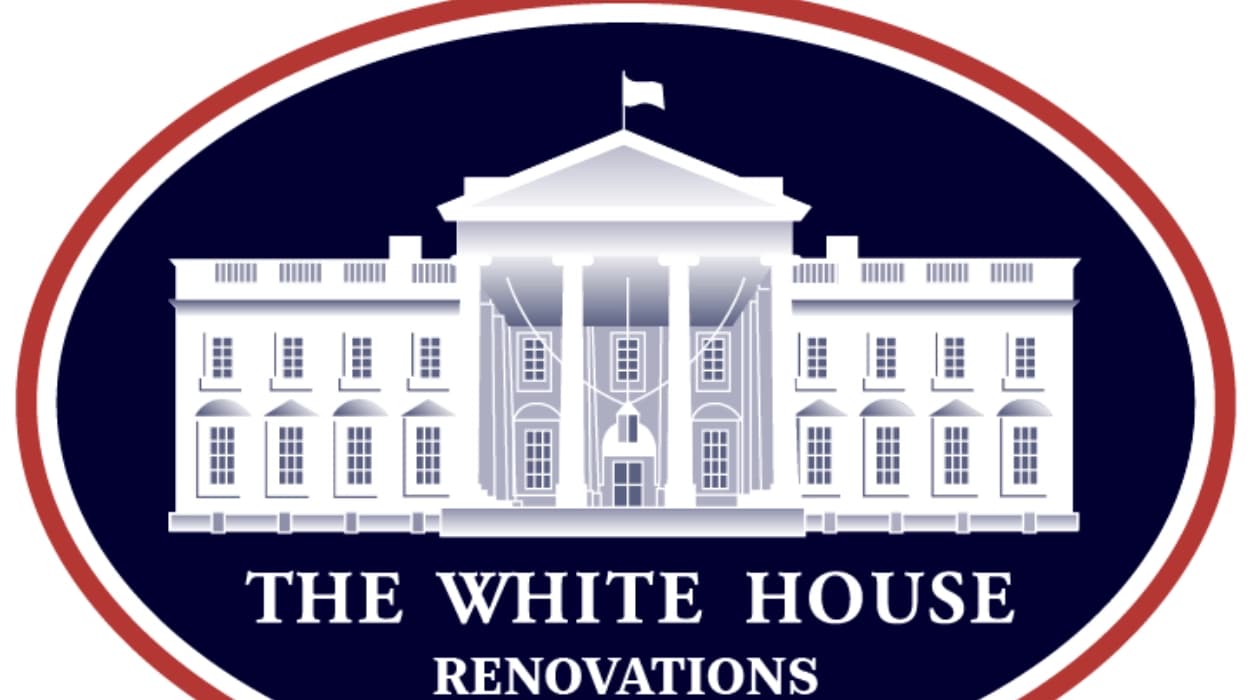Summary
- President Truman discovered piano leg broke through sitting room floor.
- Building found unsafe; floor beams rotted and ceilings sunk.
- Family relocated within White House before full evacuation started.
In a letter to his daughter, the president quipped that if he had gone through the ceiling in his marble bathtub, it would have shocked his wife and the Daughters of the American Revolution when they gathered.
“Would have gotten a headline to say the least don’t you think?” Truman wrote.
Between 1948 to 1952, Truman relocated across Pennsylvania Avenue to the Blair House, presently used for visiting dignitaries, while the elderly presidential mansion was being gutted and renovated by construction workers. The old wood-and-brick structure was strengthened by contemporary elements like concrete and steel.
More than a destructive fire during the War of 1812 or President Donald Trump's demolition of the East Wing, the historic building was altered by the Truman-era refurbishment. In the more than two centuries since the original building was finished in 1800, controversy has accompanied every significant and even minor makeover.
During his two terms as the first president of the new country, George Washington spent the most of his time in Philadelphia. Washington, a native of Virginia, selected the site for the intended "President's House" but never moved in.
According to the White House Historical Association, Irish-born James Hoban won a $500 prize in an architectural competition that Secretary of State Thomas Jefferson held in 1792 to build the residence.
According to the White House Historical Association, Jefferson collaborated with architect Benjamin Henry Latrobe to create colonnades, which are covered walkways held up by ancient Ionic columns.
The colonnades appeared aristocratic, according to congressional adversaries of Federalism. Editorials in the National Intelligence journal questioned whether such adornments were necessary for a government facility.
The destruction of the East Wing contradicted Trump’s July assurance that the new structure could be “near it but not touching it." The project led to a public outcry, including former first lady Hillary Clinton saying "he's destroying it" on social media Oct. 21.
But House Speaker Mike Johnson, R-Louisiana, who described himself as an “amateur historian,” defended the project as the latest improvement to the White House.
“President Trump is going to add the greatest improvement to the White House in the history of the building, since it was originally constructed in 1800,” Johnson told reporters Oct. 22. “The ballroom is going to be glorious. It’s going to be used for everybody. By the way, hey Democrats, if you win the White House back, you get to use it too. This is for the American people and he’s using private funds to do it. How in the world could they oppose that?”
What changes were made to White House layout during the rebuild?
Complete Junking and reconditioning of the interior structure with new steel and concrete support, and the addition of two new basement situations under the ground bottom. Expansion of the third floor and relief of the rooftop sunporch.
The state bottom apartments were largely rebuilt as ahead but with some notable changes similar as the relocation of the Grand Stair's discharge to the east into the Entrance Hall, creating a more conventional procession route. The alternate bottom was acclimated for fresh bathrooms and erected- in closets, and apartments above the East Room were lowered due to a thinner steel bottom.
ultramodern additions were made on the ground floor including enhanced service elevators, a bowling alley, expanded kitchen, broadcast plant, hairstylist shop, medical and dental conventions, carpentry and upholstery shops, and large outfit spaces.

